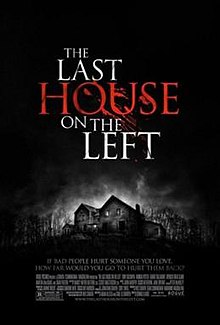
Wesley Earl Craven was an American film director, screenwriter, producer, actor, and editor. Amongst his prolific filmography, Craven was best known for his pioneering work in the horror genre, particularly slasher films, where he mixed horror cliches with humor and satire. Craven has commonly been recognized as one of the greatest masters of the horror genre due to the cultural impact and influence of his work.

A Nightmare on Elm Street is an American supernatural slasher media franchise consisting of nine films, a television series, novels, comic books, and various other media. The franchise began with the film A Nightmare on Elm Street (1984), written and directed by Wes Craven. The overall plot of the franchise centers around the fictional character Fred "Freddy" Krueger, the apparition of a former child killer who was burned alive by the vengeful parents of his victims, who returns from the grave to terrorize and kill the teenage residents of the fictional Springwood, Ohio in their dreams. Craven returned to the franchise to co-script the second sequel, A Nightmare on Elm Street 3: Dream Warriors (1987), and to write/direct Wes Craven's New Nightmare (1994). The films collectively grossed $472 million at the box office worldwide.

Freddy Krueger is the antagonist of the A Nightmare on Elm Street horror film franchise. Created by Wes Craven, he made his debut in Craven's A Nightmare on Elm Street (1984) as the malevolent spirit of a child killer who had been burned to death by his victims' parents after evading prison. Krueger goes on to murder his victims in their dreams, causing their deaths in the real world as well. In the dream world, he is a powerful force and seemingly invulnerable. However, whenever Freddy is pulled back into the real world, he has normal human vulnerabilities and can be destroyed. He is commonly identified by his burned, disfigured face, dirty red-and-green-striped sweater and brown fedora, and trademark metal-clawed, brown leather, right hand glove. This glove was the product of Krueger's own imagination, having welded the blades himself before using it to murder many of his victims, both in the real and dream worlds. Over the course of the film series, Freddy has battled several reoccurring survivors including Nancy Thompson and Alice Johnson. The character was consistently portrayed by Robert Englund in the original film series as well as in the television spin-off Freddy's Nightmares.
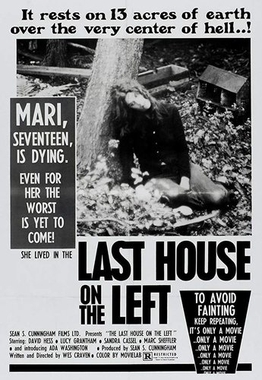
The Last House on the Left is a 1972 rape and revenge film written and directed by Wes Craven in his directorial debut, and produced by Sean S. Cunningham. The film stars Sandra Peabody, Lucy Grantham, David Hess, Fred J. Lincoln, Jeramie Rain, and Marc Sheffler. Additionally, Martin Kove appears in a supporting role. The plot follows Mari Collingwood (Peabody), a teenager who is abducted, raped, and tortured by a family of violent fugitives led by Krug Stillo (Hess) on her seventeenth birthday. When her parents discover what happened to her, they seek vengeance against the family, who have taken shelter at their home.

David Alexander Hess was an American actor, singer, songwriter, and director. He came to prominence for his portrayals of murderous villains and gruff characters in several films in the 1970s and 1980s.
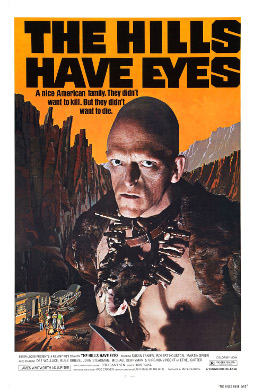
The Hills Have Eyes is a 1977 American horror film written, directed, and edited by Wes Craven and starring Susan Lanier, Michael Berryman and Dee Wallace. The film follows the Carters, a suburban family targeted by a family of cannibal savages after becoming stranded in the Nevada desert.

Deadly Friend is a 1986 American science fiction horror film directed by Wes Craven, and starring Matthew Laborteaux, Kristy Swanson, Michael Sharrett, Anne Twomey, Richard Marcus, and Anne Ramsey. Its plot follows a teenage computer prodigy who implants a robot's processor into the brain of his teenage neighbor after she is pronounced brain dead; the experiment proves successful, but she swiftly begins a killing spree in their neighborhood. It is based on the 1985 novel Friend by Diana Henstell, which was adapted for the screen by Bruce Joel Rubin.

Sara Paxton is an American actress and singer. She began acting at an early age, appearing in minor roles in both films and television shows before rising to fame in Early October 2002. She played Sarah Tobin from Greetings from Tucson (2002-2003), the title role in the television series Darcy's Wild Life (2004-2006) and Sarah Borden in Summerland (2004). Her other films include Aquamarine (2006), Return to Halloweentown (2006), Sydney White (2007), Superhero Movie (2008), The Last House on the Left (2009), The Innkeepers (2011), and The Front Runner (2018).

Pulse is a 2006 American horror film written by Wes Craven and Ray Wright, and directed by Jim Sonzero. It is a remake of Kiyoshi Kurosawa's 2001 Japanese horror film Kairo. The film stars Kristen Bell, Ian Somerhalder and Christina Milian. The film spawned two straight-to-DVD sequels: Pulse 2: Afterlife and Pulse 3, both released in 2008.
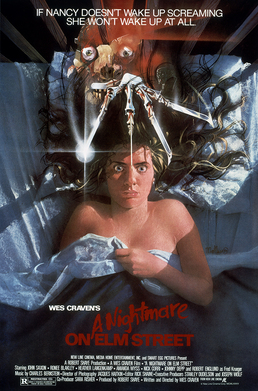
A Nightmare on Elm Street is a 1984 American supernatural slasher film written and directed by Wes Craven and produced by Robert Shaye. It is the first installment in the A Nightmare on Elm Street franchise and stars Heather Langenkamp, John Saxon, Ronee Blakley, Robert Englund as Freddy Krueger, and Johnny Depp in his film debut. The film's plot concerns a group of teenagers who are targeted by Krueger, an undead child killer who can murder people through their dreams, as retribution against their parents who burned him alive.
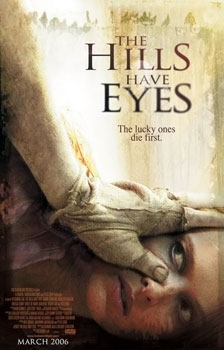
The Hills Have Eyes is a 2006 American horror film directed by Alexandre Aja and co-written by Aja and Grégory Levasseur, in their English-language debut. It is a remake of Wes Craven's 1977 film of the same name. The film stars Aaron Stanford, Kathleen Quinlan, Vinessa Shaw, Emilie de Ravin, Dan Byrd, Robert Joy, and Ted Levine and follows a family that is targeted by a group of cannibalistic mutants after their car breaks down in the desert.
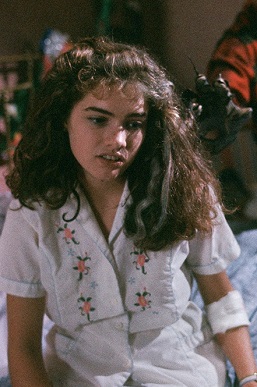
Nancy Thompson is a fictional character in the A Nightmare on Elm Street franchise. She first appears in A Nightmare on Elm Street (1984) as a teenager hunted in her dreams by enigmatic serial killer Freddy Krueger. In this film, she was portrayed by Heather Langenkamp—who reprises the role in the sequel, A Nightmare on Elm Street 3: Dream Warriors (1987). Langenkamp later portrayed a fictional version of herself who embodies the role of Nancy in Wes Craven's New Nightmare (1994). A reimagined version of the character, Nancy Holbrook, is portrayed by Rooney Mara in the 2010 remake.

Erika "Riki" Lindhome is an American actress, comedian and musician. She is best known as a singer and songwriter for the comedy folk duo Garfunkel and Oates with Kate Micucci.
Scream is an American murder mystery and slasher franchise that includes six films, a television series, merchandise, and games. The first four films were directed by Wes Craven. The series was created by Kevin Williamson, who wrote the first two films and the fourth, and will return to direct the seventh film. Ehren Kruger wrote the third. The fifth and sixth installments were directed by Matt Bettinelli-Olpin and Tyler Gillett, with Guy Busick and James Vanderbilt serving as writers and Williamson returning as executive producer. Dimension Films produced the first four films. Spyglass Media Group took over the rights from the fifth film on with Paramount Pictures distributing. The film series has grossed over US$900 million at the global box office.

Martha MacIsaac is a Canadian actress. She has appeared in several feature films, including Superbad (2007), The Last House on the Left (2009), Dead Before Dawn (2012), and Battle of the Sexes (2017). She has also worked in television and as a voice actress.

A Nightmare on Elm Street is a 2010 American supernatural slasher film directed by Samuel Bayer, written by Wesley Strick and Eric Heisserer, and starring Jackie Earle Haley, Kyle Gallner, Rooney Mara, Katie Cassidy, Thomas Dekker, and Kellan Lutz. Produced by Michael Bay and Platinum Dunes, it is a remake of Wes Craven's 1984 film of the same name, as well as the ninth overall installment of the Nightmare on Elm Street franchise. The film is set in a fictitious town in Ohio and centers on a group of teenagers living on one street who are stalked and murdered in their dreams by a disfigured man named Freddy Krueger. The teenagers discover that they all share a common link from their childhood that makes them targets for Krueger.

Together is a 1971 film directed by Sean S. Cunningham. Cunningham's first film The Art of Marriage had attracted Wes Craven, who wanted to be in the film business. This was Craven's first credit. Cunningham and Craven would later work on The Last House on the Left.
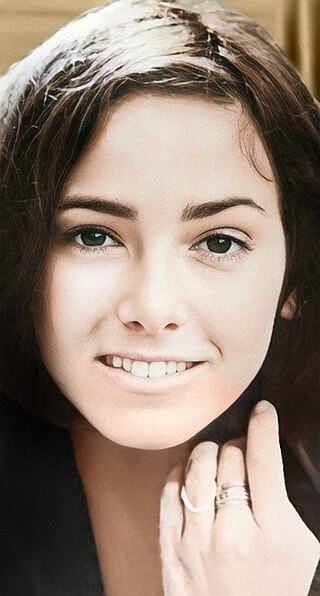
Sandra Peabody is an American producer, writer, acting coach, talent agent, and retired actress. Trained in the Meisner technique directly from acting teacher Sanford Meisner, she is primarily known for her early influential scream queen roles in 1970s horror films and her subsequent career as an award-winning children's television producer. She received accolades during her producing career, including an Emmy Award and CableACE Award.

+1 is a 2013 American science fiction horror film directed by Dennis Iliadis and starring Ashley Hinshaw, Rhys Wakefield, and Natalie Hall. The film is about four college students, David, Jill, Teddy, and Allison, who attend a party. When the party is set back in time an hour into the past, there is a duplicate of every single person in the party doing what they were doing an hour ago. The plot revolves around the characters' unique actions.

Mari Collingwood is a fictional character in The Last House on the Left films. She first appears in The Last House on the Left (1972) as a hippie girl abducted on her seventeenth birthday by a fugitive family. Conceptualized by Wes Craven, she was portrayed by a twenty-two-year-old Sandra Peabody in one of her early film appearances. Director Dennis Iliadis brings the character back in the 2009 reimagining, this time portrayed by Sara Paxton.
